Firefox is one of the most popular browsers in the world. However, as easy to use and secure as it is, it’s not immune to random bugs and glitches from time to time.
In this article, we’re talking about the “SSL_error_internal_error_alert” error in Firefox, its causes and what you can do to fix the problem.
What causes this error?
The error is generally triggered by an SSL handshake mismatch. However, other common reasons include:
- Invalid SSL certificate on site.
- Firewall or antivirus blocking the connection.
- ISP issues.
Also read: How to fix SSL_error_rx_record_too_long in Firefox?
How to fix this?
Here are ten fixes you can try out.
Get a reliable SSL certificate
If you’re getting your certificates from a not-so-popular issuing authority, chances are your SSL certificate is at fault. We recommend using LetsEncrypt or ZeroSSL to get SSL certificates that don’t cause such problems.
Use HTTPS
If you’re using HTTP to connect to the server, try switching it to HTTPS. These days most SSL certificates don’t allow HTTP as it’s less secure and more prone to attacks.

Also read: How to fix SSL_error_bad_cert_domain?
Check your listing port
You also need to ensure that your web server’s 443 port is open and is listening for traffic. This port is responsible for responding to the HTTPS protocol and, by extension, working with the SSL certificate on your site. Contact your web hosting provider for more details on how to access or open ports; depending on your plan, you might not have access to these settings.
Remove any third-party firewalls
If you’re using any other firewalls apart from the default Windows one, chances are it’s sending an RST to Firefox to terminate the attempted connection between the browser and the web server.
Try disabling or removing the firewall to check if the browser works without one. If it does, either remove the firewall or add an exception for Firefox in the firewall settings.
Disable extensions
The error can also be caused by a faulty extension interfering with Firefox’s functionality. Head over to Firefox’s Addons page and disable any active extensions.
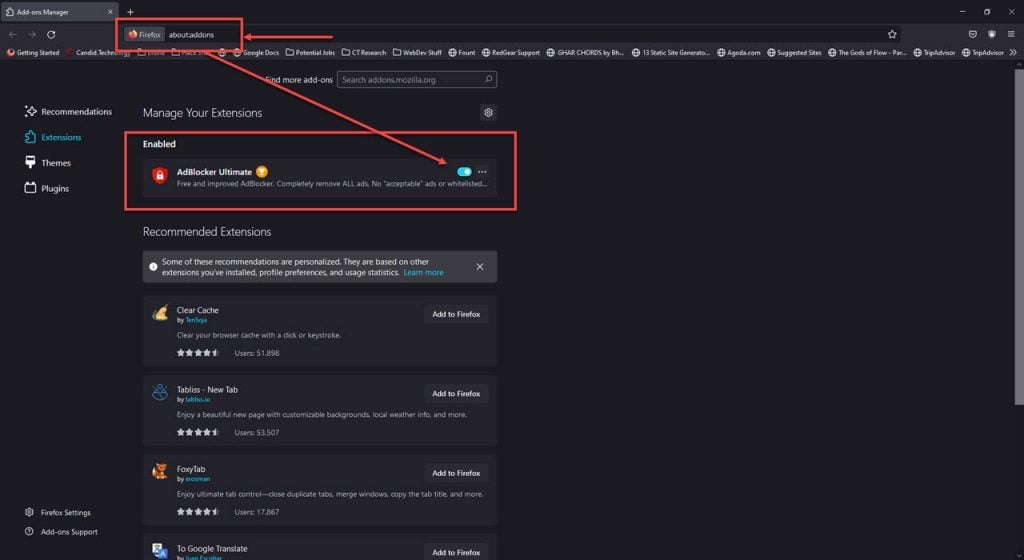
Once they’re all disabled, restart the browser and try connecting to the site again. If you can, enable extensions one at a time until you get the error again. The latest extension that you enabled here is causing the issue.
Disabling any proxies or VPNs that you might be using
Another common reason people run into this issue is when they’re trying to connect to a host through a proxy or VPN connection, and the host keeps denying the connection request.
Several high-profile sites, especially streaming ones like Netflix and Amazon Prime Video, detect and disable proxies or VPNs. In such cases, the solution is pretty straightforward. You disable your proxy or VPN client and try again.
Use the Safe mode
In conjunction with the last solution, try restarting Firefox in safe mode with any add-ons disabled to see if you can access the site.
Step 1: Head over to Firefox and click the hamburger menu icon in the top right. Click on Help.

Step 2: Click on Troubleshoot mode.

Your browser will now restart in safe mode. Try accessing your site again. The issue should be fixed.
Also read: What do the Instagram icons mean?
Clear your browser’s cache
Corrupt files in your browser’s cache can cause many problems, including this one. Here’s how you can clear out the cache in Firefox.
Step 1: Click on the hamburger menu icon in the top right and click Options.
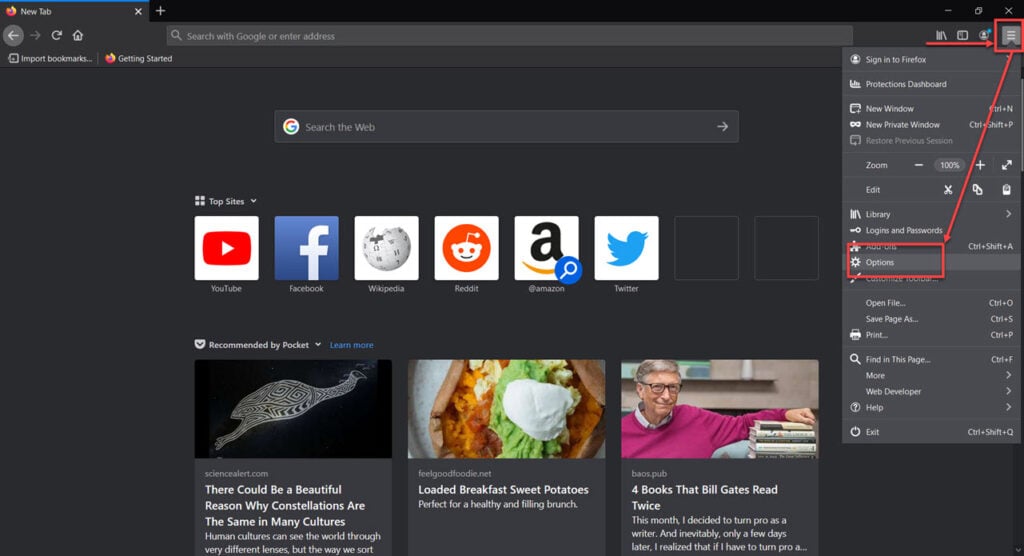
Step 2: Head over to the Privacy & Security tab.
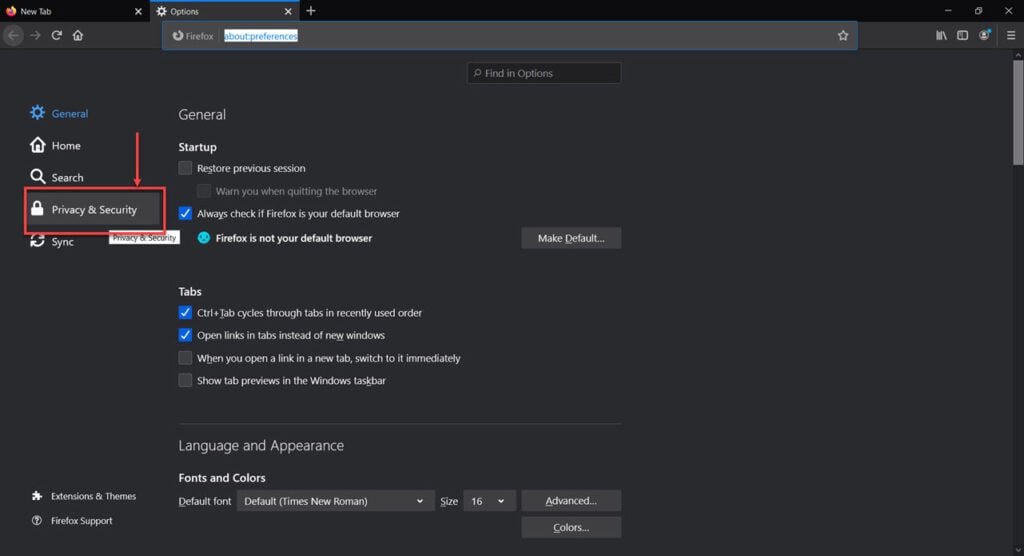
Step 3: Scroll down to Cookies and Site Data and click on the Clear Data… button.

Step 4: Check Cookies and Site Data as well as Cached Web Content and click on Clear.
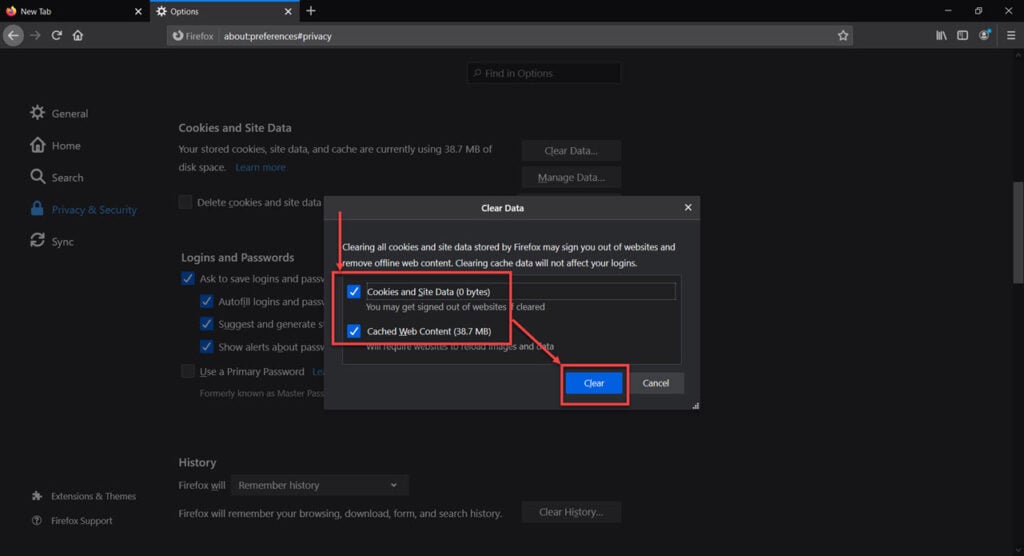
Restart your browser and try accessing the site again. This should resolve the issue.
Update Firefox
Updating your browser to the latest version available can also help resolve any security issues. To update Firefox, head to the Settings page, scroll down to the Firefox Updates section and check for any available updates.
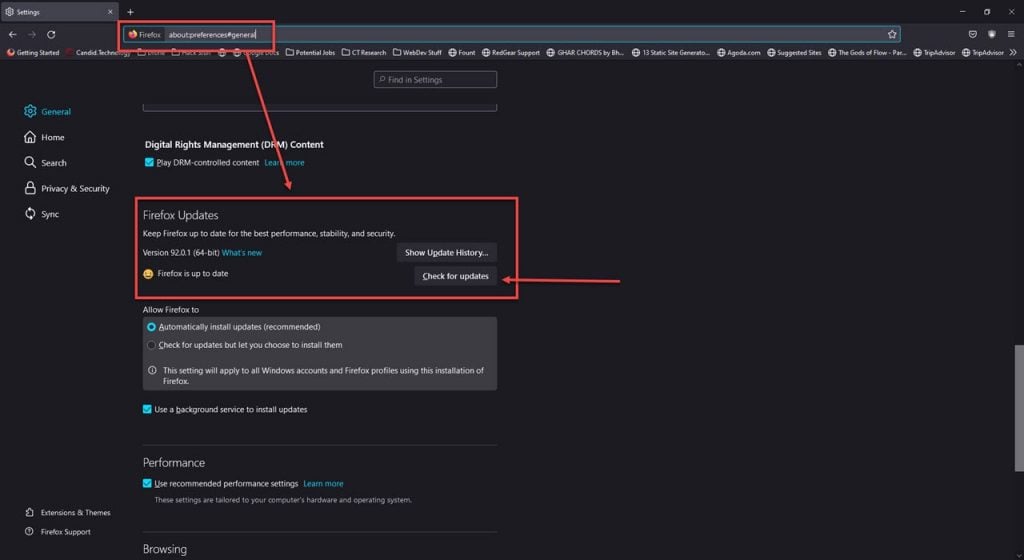
If any updates are available, install them, restart the browser and try again.
Bypass Firefox encryption protocols
Finally, you can bypass Firefox’s encryption protocols to get to the site you want. Do remember that it’s not recommended to do this as it’ll open you to risks from unknown and potentially malicious websites.

All you have to do is open Firefox and head to about:preferences#privacy. Once on the page, uncheck the Block dangerous and deceptive content setting under Security.
Also read: How to fix SSL_error_bad_mac_alert?






